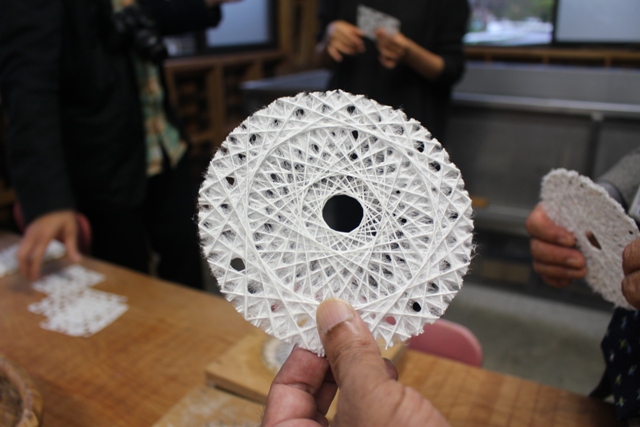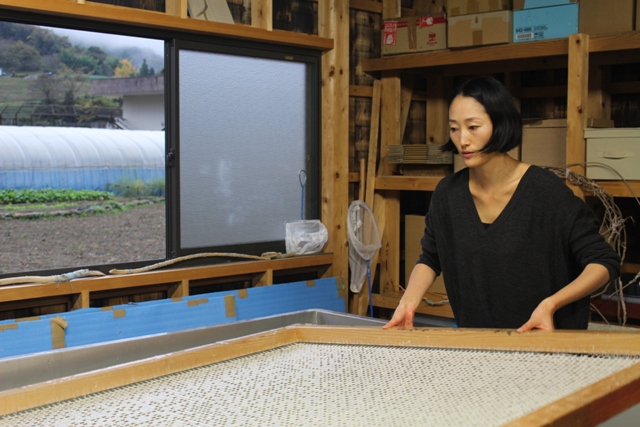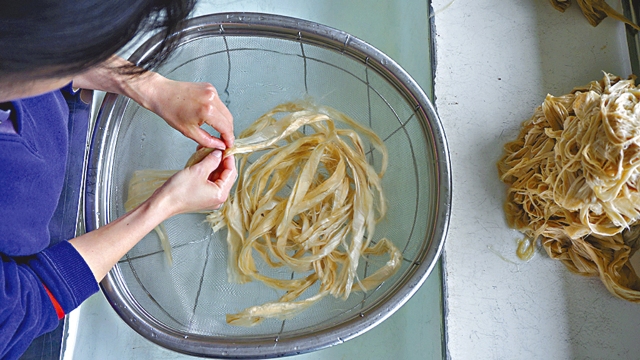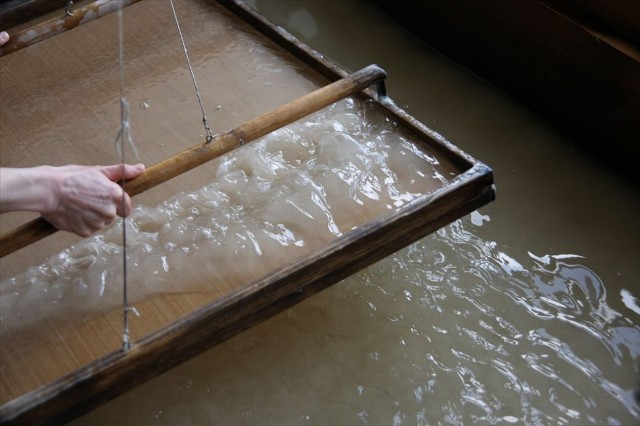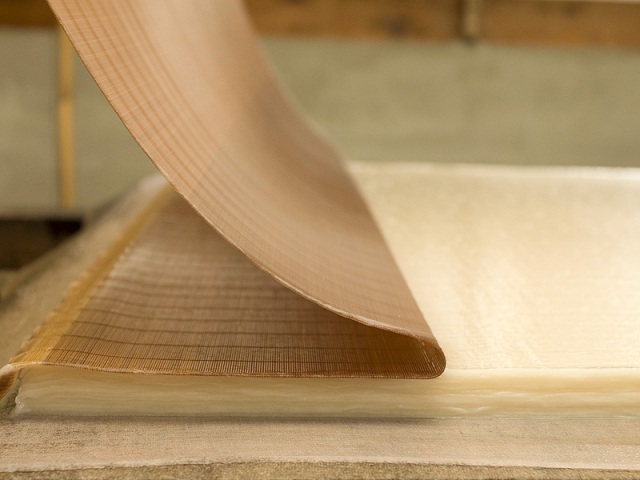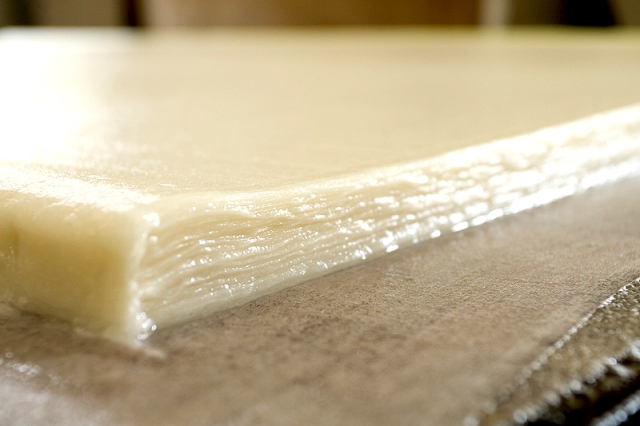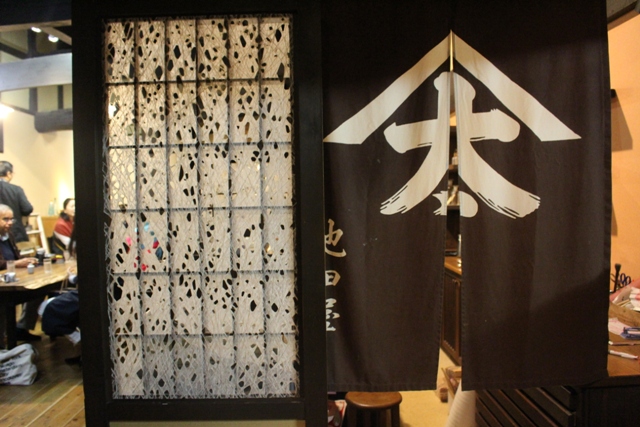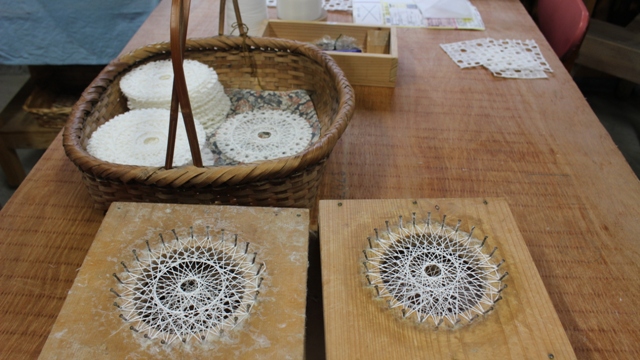“Komorebi” in Japanese has a meaning of tranquility – “pure sun rays creeping through the foilage.” Komorebi was also my feeling when I first saw Washi paper under the sunlight.
- Kyoto festival — Top 10 best events & most famous festivals in Kyoto you must see
- Pietà — The Michelangelo’s sculpture masterpiece
- Bangkok show — Top 8 best live shows in Bangkok you must-see
- Visit Jewish Museum Berlin — Explore the history, consistent, durable and strong cultural identity of Jewish
- Visiting Hua Hin Artist Village — A beautiful small corner of the artists in Thailand
Text: Phan Cac Truc / Photos: Cac Truc, Sato and others
The history of paper in the East dates back China in the first century, and then to Japan around the 7th century (specifically in 610, during the Asuka Dynasty). Since 800 (during the Nara period), Japan became incomparably proficient in papermaking techniques. And so, Japan entered the industrial age. Advanced machinery from the west gradually replaced traditional production techniques, including those of handmade Washi paper and so, in turn, Washi production households drops from more than 100,000 in 1800 to just over 400 in 1983.
I visited the Washi workshop of Sato, one of the young artists who had graduated from the University of Tokyo, decided to return to Seiyo to preserve the art of making traditional Washi paper. Sato, with great care for accuracy and something in a way akin to reverence, told us the story of the giant Washi paper slabs hung everywhere. Creating thin, tough and sustainable Washi requires skills, time, and extremely low temperatures. The conversation with Sato reminded me of a saying by the Japanese writer Haruki Murakami in the novel Blind Willow, Sleeping Woman “Your work should be an act of love, not a marriage of convenience.”
If you want to learn of the Washi papermaking process, it’s ideal to visit workshops in the winter, particularly from December to March as the high temperatures of the summer can affect the plants’ natural adhesiveness. Creating Washi needs much effort like making Sake, and requires a lot of water. Likewise, as with sake, the purer the water when making Washi, the higher the paper’s quality. If cloudy water is used, the color of the paper will unavoidably change over time. Therefore, most Washi workshops are located in areas that are far from the contamination of urban centers, and instead located near natural water sources in mountainous regions.
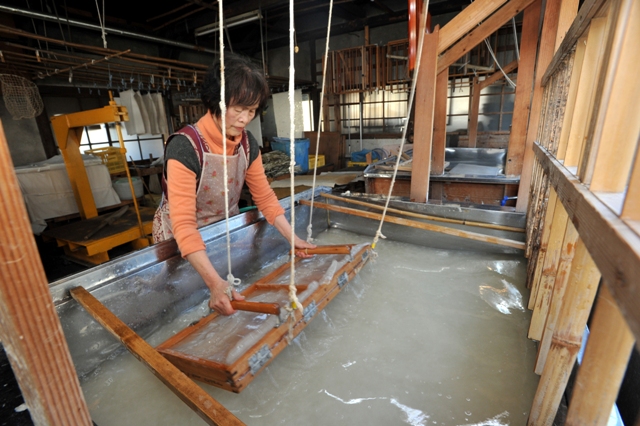
In the first stage of making Washi, Suketa (a mold formed by a finely meshed net) is embedded in a solution of water, bast fibers, and nori (a natural solidifier). The mold is embedded in the solution, taken up, spreading the solution around the mold; then repeated continuously so that the paper fibers intertwine tightly, building a thin layer on the surface of the mold. After Washi paper is formed, it is then removed from the mold, dried, pressed and dried once more. Sometimes people add hemp, banana silk, horsehair, silver leaf, or gold leaf to create different types of Washi.
Being made of braided plant fibers instead of pulp like Western paper, Washi’s longevity can be up to a thousand years. In days long since passed, Washi was even used to sew, to make armor, and as a material in creating the famous ornate garb of Japan and the kimono. Nihonga, an ancient form of painting from Japan, is traditionally done on Washi paper, with artifacts existing today that date back more than 1000 years, and yet they still remain their original light yellow color without being stained by the passage of time. Washi is also used in Origami art, paper dolls, carving, and embossing art. If one happens to know much about western paintings, and in particular the works of Rembrandt, they might notice that Washi appears in the Dutch master’s works during the time 1647 -1665 as well.
There are many kinds of Washi paper, but most of them are made from materials from the peel of one of Japan’s three plants:Kozo, Mitsumata or Gampi. The paper made of Gampi is the most expensive kind of Washi owing to its naturally delicate and sheen appearance. In the past, it was used only by the clergy and nobility. Washi made of Mitsumata is relatively soft and supple, so it also symbolizes femininity, whereas Kozo is symbolic for the protector because of its thickness and sturdiness. In addition, the paper made of Mitsumata and Kozo can be used to alter the color of illumination provided by a light source to its translucent fibers. This is a unique characteristic of the paper in the East.
Nowadays, Japanese still use Washi paper for shoji sliding door frames, but not only as a way to connect with nature, but also simply due to the papers strength and sustainability. Young artists like Sato also apply new techniques to make Washi paper become unique interior designe materials, with a variety of patterns and eye-catching designs.
Having experienced its ups and downs throughout history, Washi paper remains a painstaking crafted piece of Japanese culture whose artists bless with the most choice of vegetation, water and surroundings. Washi paper, therefore, has become an indispensable part of Japan’s long-established culture and tradition as well as iconic image well recognized by international visitors which states, perhaps more clearly than anything else: “welcome to Japan.”
See more Japan travel guide at here.
































